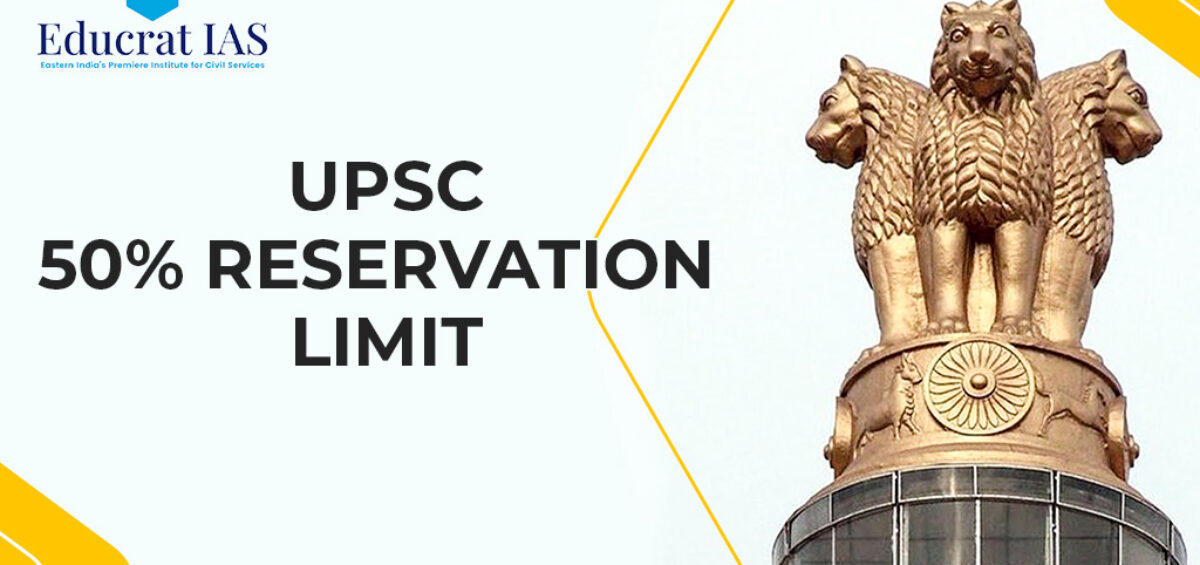50% Reservation Limit
A UPSC candidate has petitioned the Supreme Court, claiming that the final result for the Civil Services Examination 2020, which was announced on September 24, 2021, violates the 50% Reservation Limit.
What is the 50% Reservation Limit?
According to the petition, UPSC recommended 34.55 percent applicants for general category appointments and 65.44 percent for reserved category appointments, thus destroying the merit of general category candidates.
In addition, it has been claimed that only 40% of seats in the general unreserved quota have been marked for appointment, which is in breach of the 50% Reservation Limit (as ruled in Indra Sawhney vs UOI, reported in (1992) Supp. (3) SCC 217).
Why is there a cap on reservation?
Dalits in India are 16.6% of the population while Adivasis make up 8.6%, according to the 2011 Census. As per the Mandal Commission, OBCs amount to 52% – estimated using data from 1931, the last caste census conducted in India.
While this adds up to nearly 80%, all reservations are capped at 50%. The reason for this is a Supreme Court judgement from 1992, which primarily looked into the legality of OBC reservations and upheld them. However, it also pronounced a cap on reservations, ruling that “no provision of reservation or preference can be so vigorously pursued as to destroy the very concept of equality”.
Since this Court has consistently held that the reservation under Articles 15(4) and 16(4) should not exceed 50% and the States and the Union have by and large accepted this as correct it should be held as constitutional prohibition and any reservation beyond 50% would liable to be struck down,” the judgement said.
Why 50% Reservation Limit?
In its judgement, the Supreme Court held that the power of reservations should be “exercised in a fair manner and within reasonable limits” and hence “reservation under Clause (4) shall not exceed 50% of the appointments or posts, barring certain extraordinary situations as explained hereinafter.”
The court, though, never actually explained how or why it reached this 50% figure. For one, the number has no legislative backing whatsoever. No state or Union legislature has proposed such a cap. Further, the cap bears little relation to the population that is covered under reservations, which far exceeds the 50% number.
The Tamil Nadu Backward Classes, Scheduled Castes, and Scheduled Tribes (Reservation of Seats in Educational Institutions and Appointments or Posts in the Services Under the State) Act, 1993 was approved by the state’s Assembly to maintain the 69 percent reservation level.
Indra Sawhney & Others vs Union of India, 1992:
In the Indra Sawhney case (also known as the Mandal Commission case), a nine-judge panel set a 50% Reservation Limit.
- While upholding the 27% quota for backward classes, the Supreme Court overturned a government notification reserving 10% of government positions for economically disadvantaged castes within the upper castes.
- In the same case, the Supreme Court affirmed the concept that the total number of reservation recipients should not exceed 50% of India’s population.
- In the same case, the Supreme Court affirmed the concept that the total number of reservation recipients should not exceed 50% of India’s population.
- The term “creamy layer” was coined as a result of this decision, as was the requirement that reservations for backward classes be limited to initial appointments alone and not extend to promotions.

